7 F. low at Hibbing Friday morning.
44 F. high in the Twin Cities Friday.
41 F. average high for November 15.
39 F. high on November 15, 2011.
Weather History for November 16 (courtesy of the
Twin Cities NWS):
1996: Six inches of snow fell in Douglas, Pope, and Stevens Counties.
1835: Strange night at Ft. Snelling. Northern lights seen over prairie fires
Revised Winter Outlook (Don't Hold Your Breath).
NOAA's Climate Prediction Center has tweaked the November thru January
forecast for the USA, calling for milder than average over the Southwest
and Southern Plains with a 30-40% risk of colder than normal conditions
across the eastern Dakotas, Minnesota and northern Wisconsin. This is
based on a fading El Nino signal in the Pacific, and a negative phase of
the NAO, the North Atlantic Oscillation, which may keep prevailing jet
stream winds howling from the northwest much of the winter. But CPC
admits that this is a very difficult forecast, I get the sense that
confidence levels are low. I'm not convinced we're going to wind up with
a colder than normal winter, at least not yet. Maps above: CPC and
Ham Weather.
An Extended (Weather) Honeymoon
Drought is still Minnesota's number one weather
story, the Northern Lights have been visible just to our north in recent
nights, and the latest Nor'easter will spare the east coast next week.
But the top weather story: remarkably mild and dry weather will linger
across much of the USA into next week.
Mother Nature will NOT complicate
your Thanksgiving travel plans this year.
Foul weather often comes in cycles and waves.
After getting off to a violent start out east in early November, the
core of the jet stream will lift north, keeping bitter air bottled up
over Canada, leaving us with a streak of 50s. In fact model guidance is
hinting at highs near 60 Sunday, again Wednesday of next week.
A fleeting shower Monday gives way a dry rest of
the week. A more substantial storm is brewing the last few days of
November, but it's too early for specifics.
After peaking near 50 Thanksgiving Day
temperatures drop into the 30s and 40s for "Black Friday"
power-shopping, but the sun should be out.
We just had a 7 month boating season in
Minnesota, a symptom of what may be the warmest year in recorded
history. I saw a boat on the lake yesterday. In mid November?
Welcome to the new normal.
A Stubborn Drought. 100% of Minnesota is now
classified as "abnormally dry", over 43% of the state in a severe
drought, including most of the Twin Cities metro. Extreme drought covers
most of southwestern Minnesota, extending into St. Cloud. The drought
signal is pervasive, and will probably spill over into the first half of
winter. Details from NOAA's
U.S. Drought Monitor.
Leonid Meteor Shower Peaks Tonight. NASA has more information on the Leonids, which peak late tonight: "
This
year's Leonids meteor shower peaks on Nov. 17 at 4:30 AM Eastern Time.
If forecasters are correct, the shower should produce a mild but
pretty sprinkling during the night of the 16th/morning of the 17th. The
moon will be a waxing crescent setting before midnight, clearing the
way for some unobstructed Leonid viewing. "We're predicting a normal
year of 15 to 20 meteors per hour" says Bill Cooke of the Meteoroid
Environment Office at NASA's Marshall Space Flight Center. Leonids are
bits of debris from Comet Tempel-Tuttle. Every 33 years the comet
visits the inner solar system and leaves a stream of dusty debris in
its wake. Many of these streams have drifted across the November
portion of Earth's orbit. Whenever our planet hits one, meteors appear
to be flying out of the constellation Leo. For best meteor viewing Cooke
suggests going to a location away from city lights, dressing warmly,
and lie flat on your back and look straight up. No special viewing
equipment needed -- just your eyes. The Leonids occur each year in
mid-November."
Aurora Watch. Thanks to
Andrea Clarke
in Saskatchewan for passing this along. The Northern Lights have been
very visible (and vivid) in recent nights - worth a look tonight, as
skies should be clear to partly cloudy.
And Then There Were Four. The local NWS office now
counts 4 small (EF-0) tornadoes last Saturday, as a vigorous cold front
plowed across the state. Doppler radar doesn't work nearly as well on
small, brief tornadoes that spin up along a squall line - a very
different scenario from classic (large) supercell thunderstorms, the
isolated cells that spawn big tornadoes well in advance of the cold
front during spring and summer. Here's
more from the NWS: "
There
were two tornadoes in this region (map) that occurred Saturday night,
November 10th. One was near Interstate 494 and Highway 13. The other
tornado occurred near Lilydale, between Wachlter and Butler Ave, or
paralleling Highway 13. Two areas of straight line wind damage occurred
from near Dodd Road and Highway 110, northeast to Robert Street and
Sidney Street; and along Highway 13, between Mendota and Lilydale. Both of the tornadoes had a path length of approximately one-half mile."
Misplaced Priorities. Maybe it's just me, but the
media's sudden obsession with "the Petreus affair" seems way off-base,
considering the carnage, heartache and loss on the east coast in the
wake of Sandy.
This web site
sums up the hypocrisy of leading with lurid tales of sex at high
levels, when hundreds of thousands of Americans are trying to put their
lives back together again. It's worth a look.
Contributions For Sandy Victims. Kudos to KARE-11
and any and all MInnesotans who contributed to a (big) shipment of
supplies, heading from MSP to New Jersey, in the aftermath of Super
Storm Sandy, which produced the lowest air pressure ever observed for
portions of the northeast on October 29. It will take months, possibly
years for coastal towns to return to some sense of normalcy.
Sandy Shook U.S. Like An Earthquake. How severe was
Sandy? Powerful enough to physically shake the ground many hundreds of
miles away. Here's an excerpt of an amazing article and animation at
Our Amazing Planet: "
Hurricane
Sandy pummeled the United States from Florida to Wisconsin, and its
fierce winds caused a vast swath of ground to shake, a new
earthquake-monitoring animation shows. The visualization shows seismic
stations lit up as the storm approached Florida on Oct. 26. The
earthquake monitors detected rolling seismic waves
caused by Sandy's fierce winds out at sea. The earthquake-monitoring
network always "hears" a continuous hum of background noise generated
in the ocean, called microseism, said Alex Hutko, a seismologist at the
Incorporated Research Institutions for Seismology (IRIS) in Seattle,
and creator of the Hurricane Sandy animation..."
Surging Storms: Can The US Adapt In Time To Avert Coastal Damage.
I would hazard a guess that the short answer is an emphatic no. We're
allowing people to build homes in high-risk coastal areas, and rebuild
after major storms like Sandy on a consistent basis. Insanity is defined
as doing the same thing over and over, expecting different results.
Mandatory federal insurance is required for people living close to sea
level, and taxpayers indirectly contribute to this ongoing treadmill of
rebuilding. It's the third rail of politics - nobody wants to say it out
loud, but too many people are building in areas prone to repeated storm
surges from hurricanes and Nor'easters. Private insurance companies
won't touch these policies - and for good reason. Here's an excerpt of
an article at
The Christian Science Monitor: "...
Indeed,
damage from tropical systems such as Sandy are projected to multiply
by the end of the century as the population grows and people put more
assets in harm's way. That's true whether or not global warming, which
many researchers say is feeding extreme-weather events, is factored in.
Tropical-cyclone damage now runs about $26 billion a year globally,
according to a study published in January in the journal Nature
Climate Change. By 2100, increases in population and wealth as
economies grow could push that number to $56 billion a year, assuming
little or no effort to adapt to the hazard..."
Photo credit above: "
Houses in Bayhead, N.J., showed
effects of Sandy Nov. 2. Rising populations and seas, and more severe
weather, may mean $100 billion a year in global damage by 2100." Tim Larsen/New Jersey Governor’s Office/Reuters.
We Survived Hurricane Sandy. Now What? Here's a clip from a first-person account of Sandy at
Huffington Post: "
I
live on the Texas Gulf Coast. I have lived through a lot of
hurricanes and tropical storms. Yet last month, I flew into New York
City for a hurricane. Why? Following my recent book launch, I had a lot
of important media events, including a potentially game-changing TEDx
talk, scheduled starting on October 30. This SQ work is my passion and
mission. I didn't want to miss these events because of cancelled
flights. So I left on the second-to-last flight out of Houston to
Newark, and arrived at my hotel hoping that Sandy would be more hype
than horror. As a storm veteran, I brought a flashlight, extra
batteries, boxes of granola bars, and other food with me. I verified
that the hotel had a backup generator just in case. I confirmed we were
not in the Zone A evacuation area. I stocked up on some bottled
water, filled the tub, and hunkered down. Over the next few days, the
local news crew became my primary companions..."
Lake Effect Snow From Space. The high-resolution ("MODIS") satellite from NASA boasts resolutions as good as 250 meters. Here's an excerpt from a recent
NOAA post describing favorable conditions for lake effect snow bands: "
Snowfall
reports from Cooperative Observers, Spotters, and Social Media
indicated anywhere from 2-6 inches of snow fell over Northwest Upper
Michigan as of the morning of 11/13. In addition, locations east of
Munising near Lake Superior received up to 3 inches of snow (seen
through the clouds from Pictured Rocks National Lakeshore to Newberry).
The widespread area of Lake Effect Snow highlights the areas that are
favored by West to Northwest winds, as the snow quickly diminished
after passing over the Huron Mountains (produced just a light dusting in
Marquette). This was due to the combination of downslope wind off the
higher terrain and the snow showers being removed from the influence of
Lake Superior. This lack of snow continued to the east of Marquette
until the Pictured Rocks National Lakeshore, where the West-Northwest
winds allowed a long enough residence time over Lake Superior to produce
lake effect snow. To see a listing of snowfall reports from this lake
effect snow, click here."
Thanksgiving Preview. ECMWF model data (courtesy of
WSI) shows unusually mild, dry weather across most of the USA next
Thursday; cold air temporarily locked to the north over Canada. A few
showers are possible from northern California to Boise, Idaho -
otherwise dry weather should be the rule. Thursday's weather map looks
like something out of early or mid October. Map above: WSI.
"Quiet Black Friday". Good news for power-shoppers.
We expect dry weather over the Upper Midwest, the only chance of a few
(rain) showers near Cleveland, Detroit and Buffalo. Heavy, windswept
rain lashes the Pacific Northwest, foul weather likely from Seattle to
Portland. Otherwise pretty quiet for late November. Model data: WSI.
Barlow and Wellstone Create New Mental Health Initiative.
I've been impressed with KSTP-TV meteorologist Ken Barlow's courage in
coming forward with his bipolar condition - he's already helped
countless Minnesotans and he's just getting started. I want to support
him any way I can going forward. Here's an excerpt of a story at
TwinCities.com: "
Ken
Barlow and David Wellstone are teaming up to create the
Wellstone-Barlow Mental Health Initiative. The two met at the National
Alliance on Mental Illness walk in September, where Barlow, a KSTP-TV
meteorologist, revealed he had bipolar disorder. Wellstone -- a
passionate advocate for mental health issues -- was at the event to
speak about mental health parity. "I never met Ken until the NAMI walk
where he told his story about bipolar," said Wellstone, who suffered
from post traumatic stress disorder and depression following the plane
crash 10 years ago that killed seven people including his father, Sen.
Paul Wellstone, mother, Sheila, and sister Marcia. "I worked pretty
hard on the mental health parity bill, so I wanted to launch an
organization that continued to work to bring collaboration together for
policy issues...."
"Indoor Clouds". Here's an excerpt of a fascinating post (and experiment) at
mashable.com: "
Dutch artist Berndnaut Smilde
has developed a way to create clouds indoors by carefully regulating
the space’s humidity, temperature and light. This intersection of
science and art was recently named one of TIME magazine’s “Best Inventions of the Year 2012.”
The fluffy white clouds are summoned up temporarily using a fog
machine, creating a surreal experience in the middle of a room. Smilde
has created his clouds inside different types of locations, ranging from
corridors and hallways, to bedrooms and common spaces..."
San Diego Dream. What a photo - thanks to Jim Grant
and WeatherNation TV for sharing this beach pic from San Diego - the
city with the best yearround climate in the USA. Today that wasn't hard
to believe.
Analyst Predicts Apple TV Set Is "Imminent".
Personally, I'm not so convinced, unless Apple has been able to pull off
incredible secrecy and stealth with this long-rumored invention.
Gizmag.com has more details: "
Apple's
TV set just won't go away. For a couple of years, its rumored
existence has been a favorite subject of analysts and tech blogs. Just
as we thought iTV Fever had died down, another analyst has chimed in,
predicting that the its release is "imminent." James Kisner, an
investment analyst with Jefferies, thinks the time is now for the Apple
television. He says that a cable company is investigating how much
extra bandwidth it would need to handle the Apple TV set: "Our
discussions with industry contacts suggest that at least one major N.
American MSO (Multi system operator) is working to estimate how much
additional capacity may be needed for a new Apple device on their
broadband data network. We believe this potentially suggests an
imminent launch of the Apple TV …"
A Cooler Front. Friday was about as cool as it's
going to get looking out beyond a week; under blue sky with a whiff of
Canada in the air highs ranged from 38 at Duluth and Hibbing to 42 St.
Cloud, 44 Twin Cities and 47 at Rochester.
Paul's Conservation Minnesota Outlook for the Twin Cities and all of Minnesota:
TODAY: Partly sunny, breezy. Winds: S 10-20. High: 55
SATURDAY NIGHT: Partly cloudy, not as chilly. Low: 40
SUNDAY: More clouds than sun, milder. High: 58
MONDAY: Patchy clouds, fleeting shower? Low: 40. High: 57
TUESDAY: Lot's of sun, still pleasant. Low: 36. High: near 50
WEDNESDAY: Blue sky, touch of Indian Summer. Low: 42. High: 61
THANKSGIVING DAY: Cooler, clouds slowly increase. Low: 38. High: 50
"BLACK FRIDAY": Sunny and brisk. Risk of shopping. Low: 30. High: 42
* enjoy the mild, quiet weather. Long-range guidance (ECMWF) suggests a return of 20s and 30s after Monday, November 26.
Climate Stories....
Gas Industry Attacks Scientists After Research Finds Triple The Normal Levels of Methane At Australian Gas Fields.
I'm just as pumped up as most people about the promise of natural gas
extracted via "fracking" - it's much cleaner than burning coal. But if
wells aren't plugged up properly they can leak methane, a greenhouse gas
20 times more potent than CO2. Here's an excerpt of an article at
desmogblog.com: "
LEVELS
of the potent greenhouse gas methane have been recorded at more than
three times their normal background levels at coal seam gas fields in
Australia, raising questions about the true climate change impact of the
booming industry. The findings, which have been submitted both for peer review and to the Federal Department of Climate Change,
also raise doubts about how much the export-driven coal seam gas (CSG)
industry should pay under the country's carbon price laws. Southern
Cross University (SCU) researchers Dr Isaac Santos and Dr Damien Maher
used a hi-tech measuring device attached to a vehicle to compare levels
of methane in the air at different locations in southern Queensland
and northern New South Wales. The gas industry was quick to attack
their findings and the scientists themselves..."
Has Obama Turned A Corner On Climate Change? The story from
The Christian Science Monitor; here's an excerpt: "...
If
the message is somehow we’re going to ignore jobs and growth simply to
address climate change, I don’t think anybody’s going to go for that,"
Obama said. "I won’t go for that." Obama dismissed the inverse
relationship some ascribe to environmentalism and job growth. The
president instead endorsed an agenda that both advances economic growth
while making "a serious dent in climate change." In what is likely an
allusion to hurricane Sandy,
Obama emphasized the importance of long-term, proactive investments in
infrastructure as a means of reducing the reconstruction costs
incurred by extreme weather events..."
Photo credit: "
President Obama leaves the East Room of
the White House in Washington, Wednesday, following his first news
conference after his reelection. Mr. Obama addressed the subject of
climate change at some length in response to a reporter's question." Jacquelyn Martin/AP
Be Persuasive. Be Brave. Be Arrested (if necessary).
Think climate change can't effect your investment portfolio? Think
again. Here's a clip of a thought-provoking paper and warning at
nature.com: "
I
have yet to meet a climate scientist who does not believe that global
warming is a worse problem than they thought a few years ago. The
seriousness of this change is not appreciated by politicians and the
public. The scientific world carefully measures the speed with which we
approach the cliff and will, no doubt, carefully measure our rate of
fall. But it is not doing enough to stop it. I am a specialist in
investment bubbles, not climate science. But the effects of climate
change can only exacerbate the ecological trouble I see reflected in the
financial markets — soaring commodity prices and impending shortages..."
America's Carbon Compromise. Here's an excerpt of a new paper at
Nature: "
This
week, a reinvigorated Barack Obama returned to the White House knowing
that he was poised on the edge of a fiscal cliff. Rather than
relishing his victory last week, Obama must immediately set about
crafting a compromise on deficit reduction with congressional leaders.
The stakes could hardly be higher — for science, for US citizens and,
indeed, for the world. In the event of failure, a budgetary time-bomb of
tax increases and sweeping budget cuts will detonate on 2 January. As
well as resulting in indiscriminate cuts to funds for scientific
research and many other areas, it could knock the United States back
into recession and deliver yet another blow to an already fragile global
economy..." Image: Clean Technica.
Obama Says He Will Elevate National Climate Change "Conversation". Here's an excerpt from a story at
Climate Science Watch: "
A
New York Times reporter asked President Obama at his White House news
conference today: "What specifically do you plan to do in a second term
to tackle the issue of climate change?" The President's reply included
this: "What I'm going to be doing over the next several weeks, next
several months, is having a conversation, a wide-ranging conversation
with scientists, engineers, and elected officials to find out what can
-- what more can we do to make a short-term progress in reducing
carbons, and then working through an education process that I think is
necessary -- a discussion, a conversation across the country about what
realistically can we do long term to make sure that this is not
something we're passing on to future generations that's going to be very
expensive and very painful to deal with."
"Time To Do Something About The Weather". Here's an excerpt of a timely Op-Ed at Milwaukee's
Journal Sentinel: "
There
was precious little discussion of climate change during the
presidential campaign and most other political races this year. That may
strike some as a little surprising, given the weather that's been
plaguing much of the nation over the past couple of years, which has
cost billions of dollars of damage and taken hundreds of lives. Maybe
politicians think that climate change has become the new third rail of
politics (it used to be Social Security, but these days everyone's
talking about Social Security), but on this issue they're way behind
everyone else. They need to catch up and start making some real
proposals on how to mitigate both the trend and the effects - and they
need to start doing so as soon as new members are seated in Congress and
President Barack Obama renews his oath in January. The people are
paying attention. According to a national survey released Tuesday, a
large majority of Americans (77%) say global warming should be a "very
high," "high" or "medium" priority for the president and Congress..."


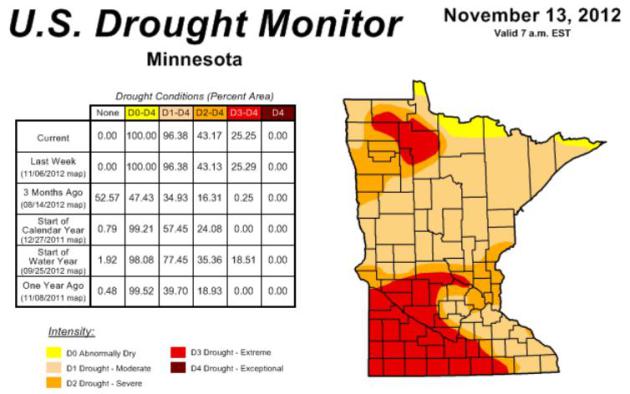
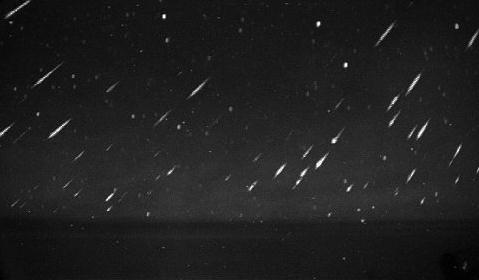
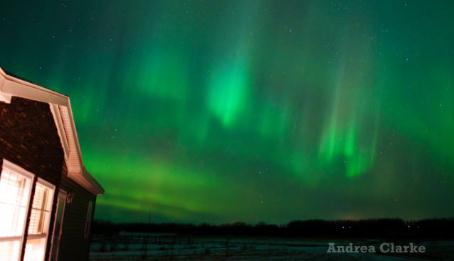

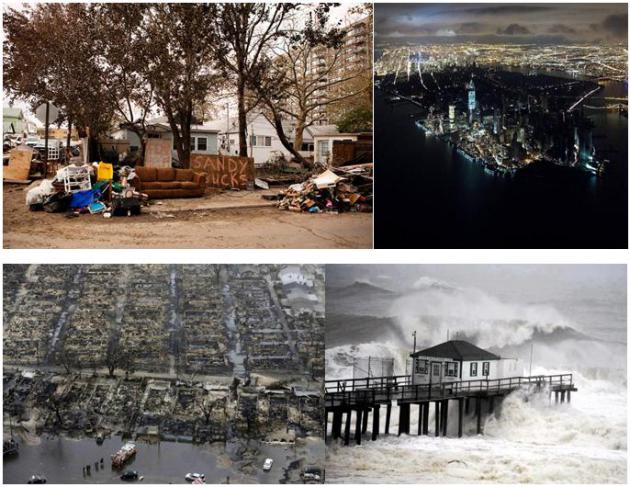
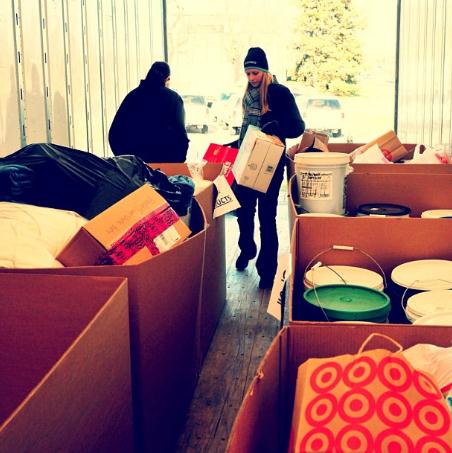

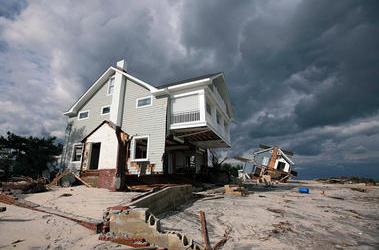
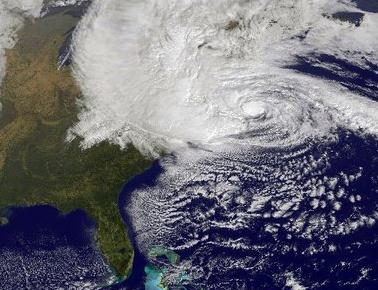

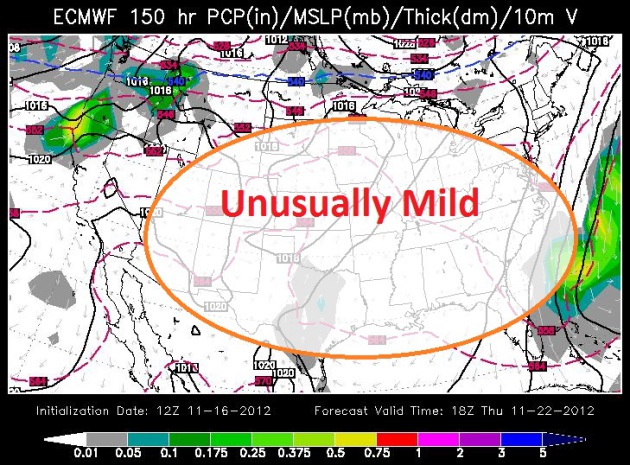
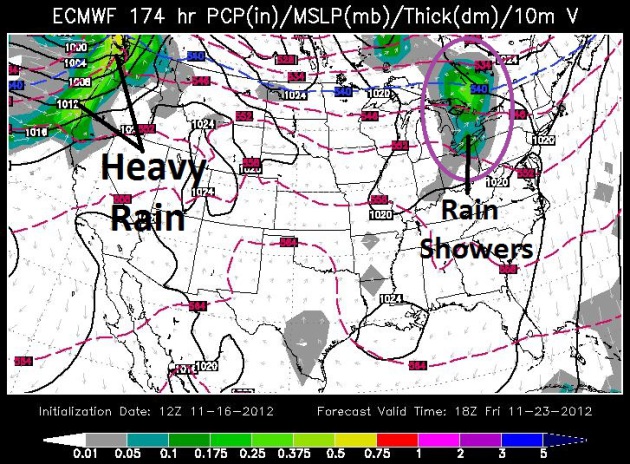
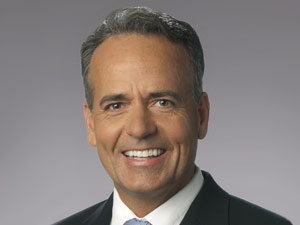






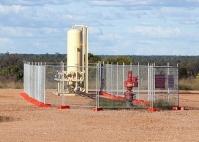


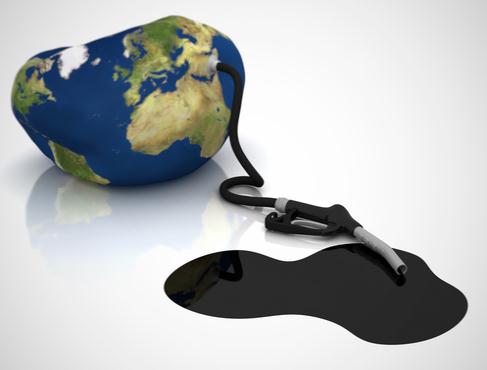
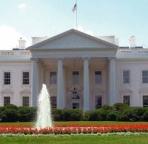

No comments:
Post a Comment